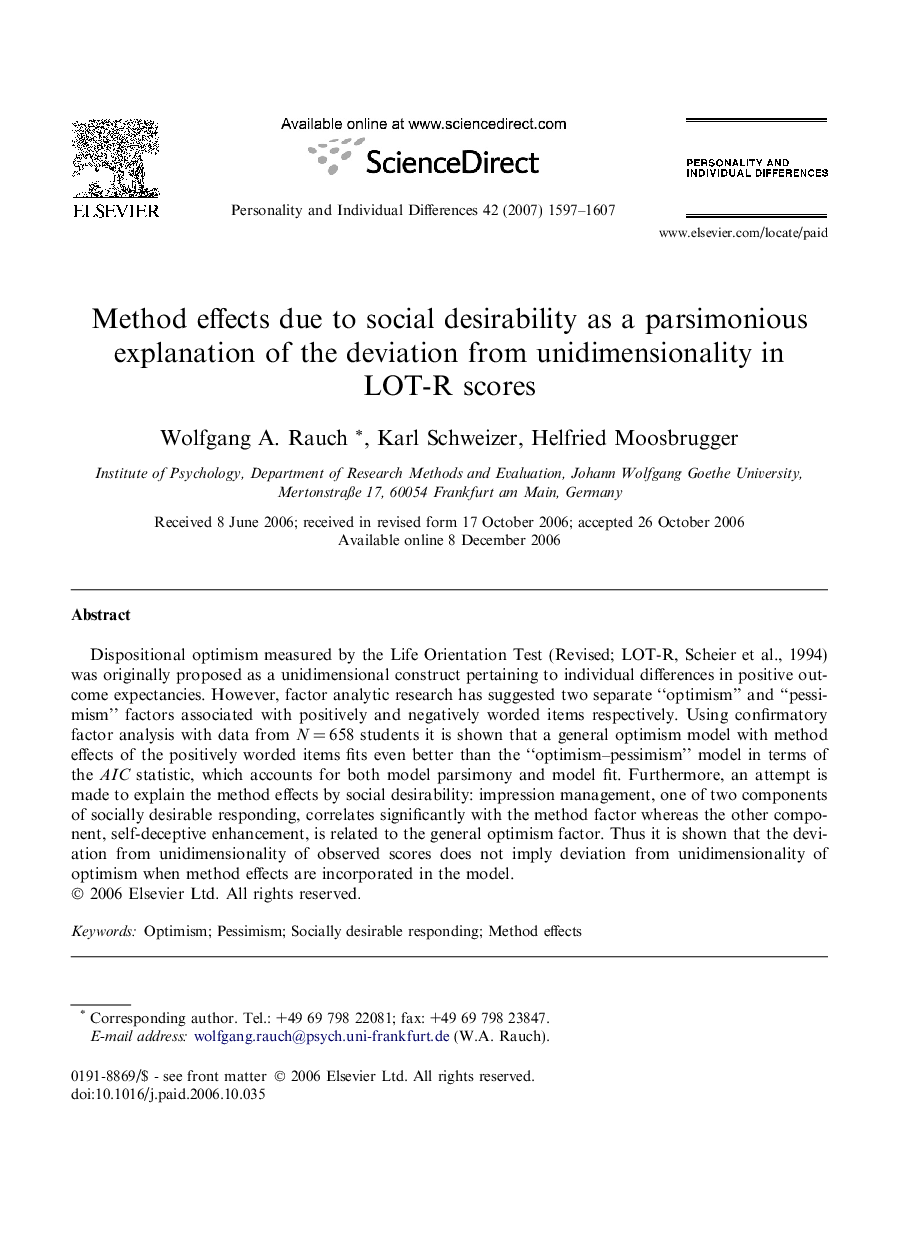| Article ID | Journal | Published Year | Pages | File Type |
|---|---|---|---|---|
| 892763 | Personality and Individual Differences | 2007 | 11 Pages |
Dispositional optimism measured by the Life Orientation Test (Revised; LOT-R, Scheier et al., 1994) was originally proposed as a unidimensional construct pertaining to individual differences in positive outcome expectancies. However, factor analytic research has suggested two separate “optimism” and “pessimism” factors associated with positively and negatively worded items respectively. Using confirmatory factor analysis with data from N = 658 students it is shown that a general optimism model with method effects of the positively worded items fits even better than the “optimism–pessimism” model in terms of the AIC statistic, which accounts for both model parsimony and model fit. Furthermore, an attempt is made to explain the method effects by social desirability: impression management, one of two components of socially desirable responding, correlates significantly with the method factor whereas the other component, self-deceptive enhancement, is related to the general optimism factor. Thus it is shown that the deviation from unidimensionality of observed scores does not imply deviation from unidimensionality of optimism when method effects are incorporated in the model.
